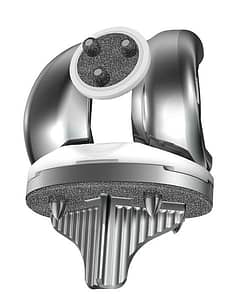
Porous Coating allows for cementless fixation
Stryker’s Joint Replacement division today announced that its cementless Mako Total Knee with Triathlon Tritanium has received market clearance by the U.S. Food and Drug Administration for Q4 2017.
Triathlon Tritanium combines Triathlon knee implant with the latest in highly porous biologic fixation technology for a knee system that holds the promise of improved fixation and longevity in younger and obese total knee replacement patients. The innovation of Tritanium’s tibial baseplate and metal-backed patella components allow the components to be implanted without bone cement. Bone cement loosening is one of the mechanisms of failure of artificial knees. The though is that if one eliminates the bone cement the implant can potentially last longer.
Cementless procedures rising in popularity and becoming a fast-growing trend, especially in the under 50 year old patient. Coupling robotics and cementless fixation solution allows orthopaedic surgeons to be more precise in the bone preparation which could increase the success of cementless total knee replacement.
If you are under 50 or have a high BMI this cementless Mako Total Knee is a procedure you should give serious consideration. The combination of robotic surgery and ingrowth fixation is the latest advancement of total knee replacement technology.









